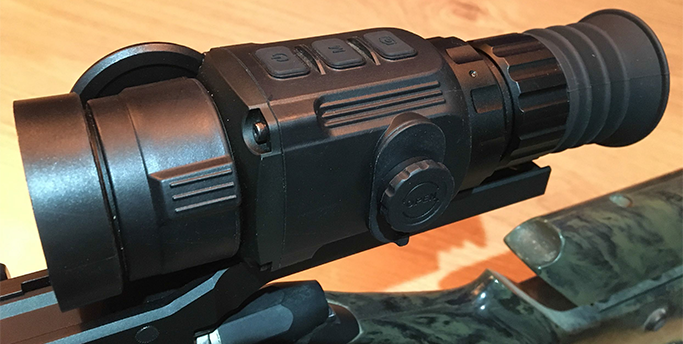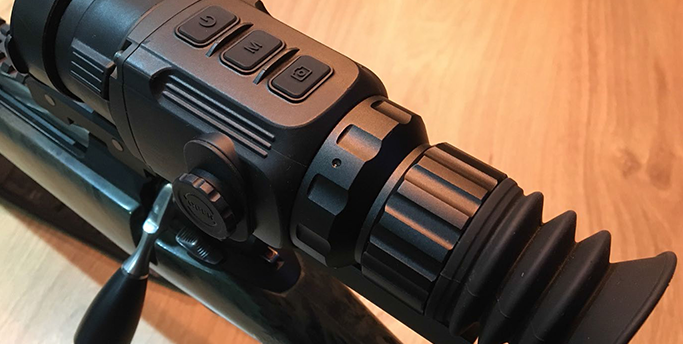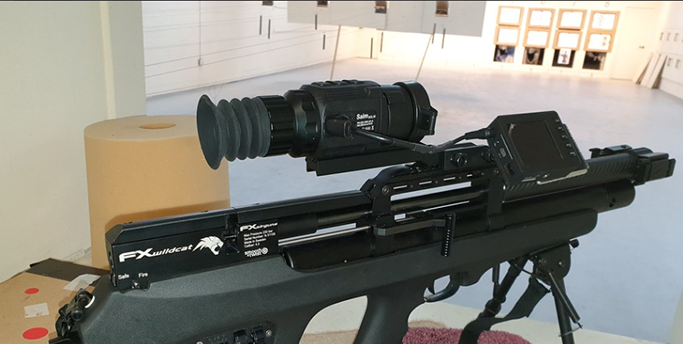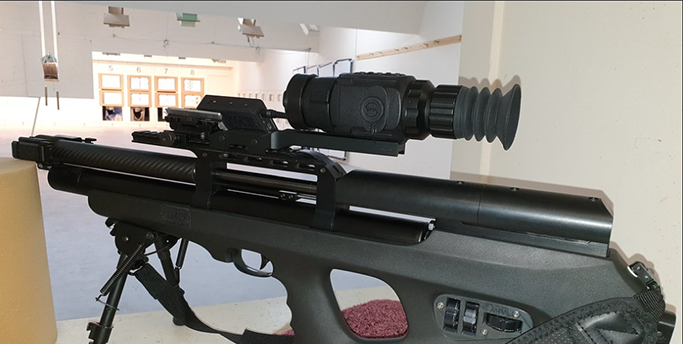More of the Saim!
More of the Saim!
Mark Ripley has kept a close eye on a thermal imager in 2020 – would this SCL35 thermal scope be the more of the Saim, or better?
For a long time, I have been a little dubious of the merits of a thermal scope over a night vision scope, primarily on the basis that it’s not always easy to 100 percent identify your target simply from its heat source.
“These scopes will certainly find favour with fox shooters in this country with their competitive pricing and clear sharp picture quality.”
In reality, thermal imagery has come on so much that within 150-200 yards with a good quality optic, combined with knowledge of your quarry, you can indeed positively identify your target and if you are in any doubt and pass up those shots, overall you’re still likely to be shooting more foxes than you would with night vision or lamp simply because the animal has no idea you’re there.

Identifying your quarry with a thermal is as much about how it moves and acts as it is about how it looks. I’ve recently had the chance to test a couple of thermal scopes from the InfiRay product range supplied by optical Solutions and was surprised at how much they had to offer at such reasonable prices.
The second unit I had to test was one of their Saim series of thermal imaging scopes – the SCL35. These are designed to meet the needs of the average rifle shooter and would be ideal for everything from rats to large game and with a detection range of out to 1800 metres on a man-size target (depending on model), longer-range shooting is certainly an option available to you.

These scopes will certainly find favour with fox shooters in this country with their competitive pricing and clear, sharp picture quality and again, ease of operation.
Features on the Saim riflescope range–which comprises of several different models – include one-shot zero function, high shock resistance (up to 1000g), multi-reticle options and colours and the ability to run them all from an external power supply such as a portable power pack.
These scopes use the picture in picture(PIP) mode which I personally like to use. This is a smaller picture box overlaid on the screen with the crosshair area magnified within that box, allowing you to precisely pick your point of aim whilst also maintaining a wide field of view. The scopes run on two CR123 batteries and will also run on rechargeable versions.

The top-end models within this range also incorporate video recording and WiFi which will enable you to record footage and pictures directly to the unit’s 16GB internal memory, and which can then be transferred, via a cable, to your computer or even direct to a smartphone via WiFi.
The WiFi function also allows for live streaming to up to four smartphones or tablets, so you can share the action viewed through the scope as it happens with your shooting partner!
There is also a function on the scope known as an ultra-clear mode which is specially designed for use in poor weather conditions such as rain and fog and acts to sharpen the image. This is a very useful feature and counters something which can seriously limit the performance of other thermal units.
The scopes themselves are very lightweight and neat and appear to be well made with easily useable controls.

All in all, these scopes offered crisp, clear images and performed well on the test rifle. Unfortunately, I only had time to test the Saim riflescope on a .22 rimfire which I used to shoot an urban fox that had become a nuisance in someone’s garden.
This really was no test for the scope at around 30 yards but I did take the scope out in the field on several occasions in varying weather conditions and the scope performed well whilst observing wildlife at various ranges.
Although the Saim is an ideal foxing scope, it would also be just as effective as a rabbiting or ratting scope on a rimfire or air rifle too if you wanted to use it on multiple rifles. I have to say I was pleasantly surprised by the quality of these devices especially considering their competitive pricing and would certainly suggest anyone considering purchasing a thermal unit takes the time to look at these options.
Originally excerpted from magazine Sport Rifle and had finished the second editing.


Comments
Post a Comment